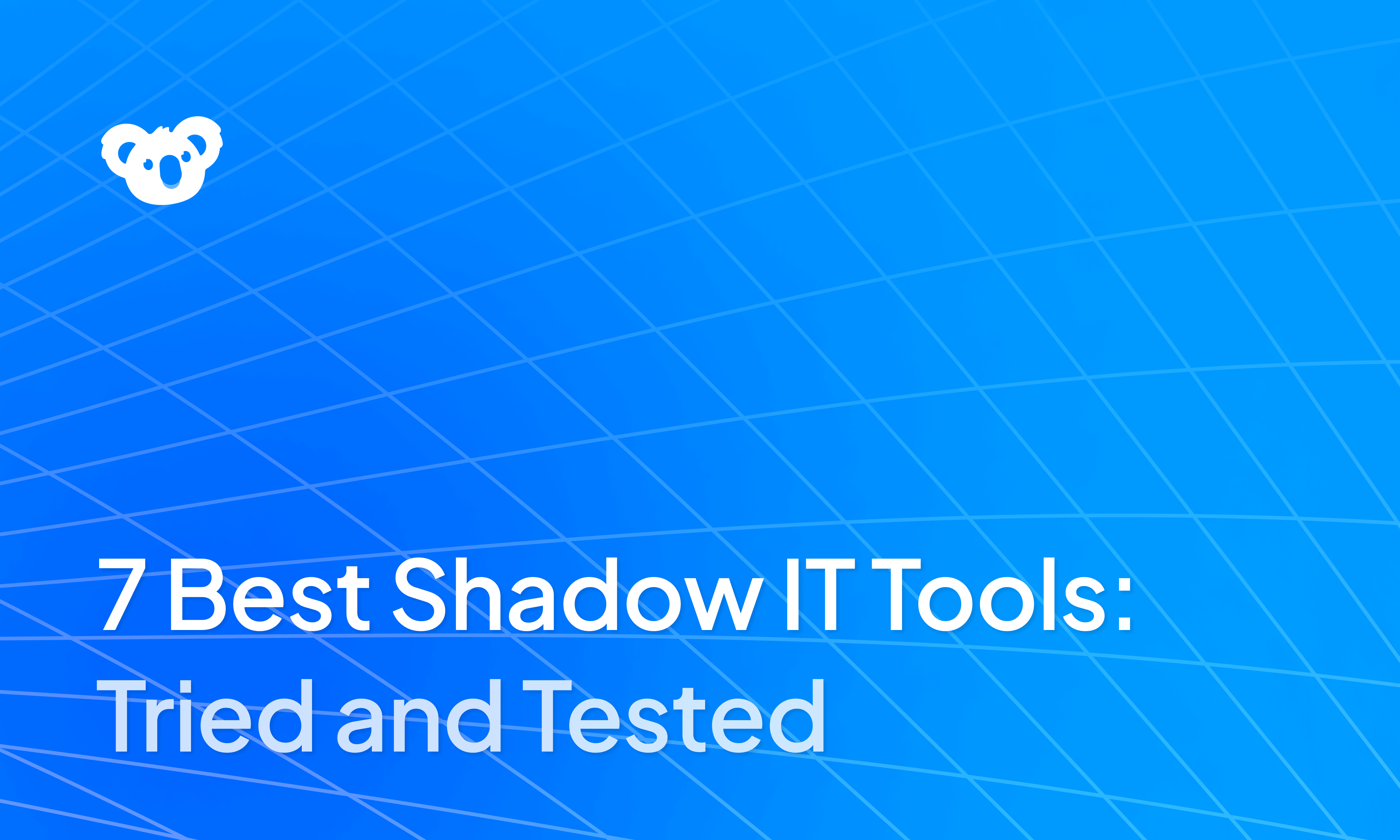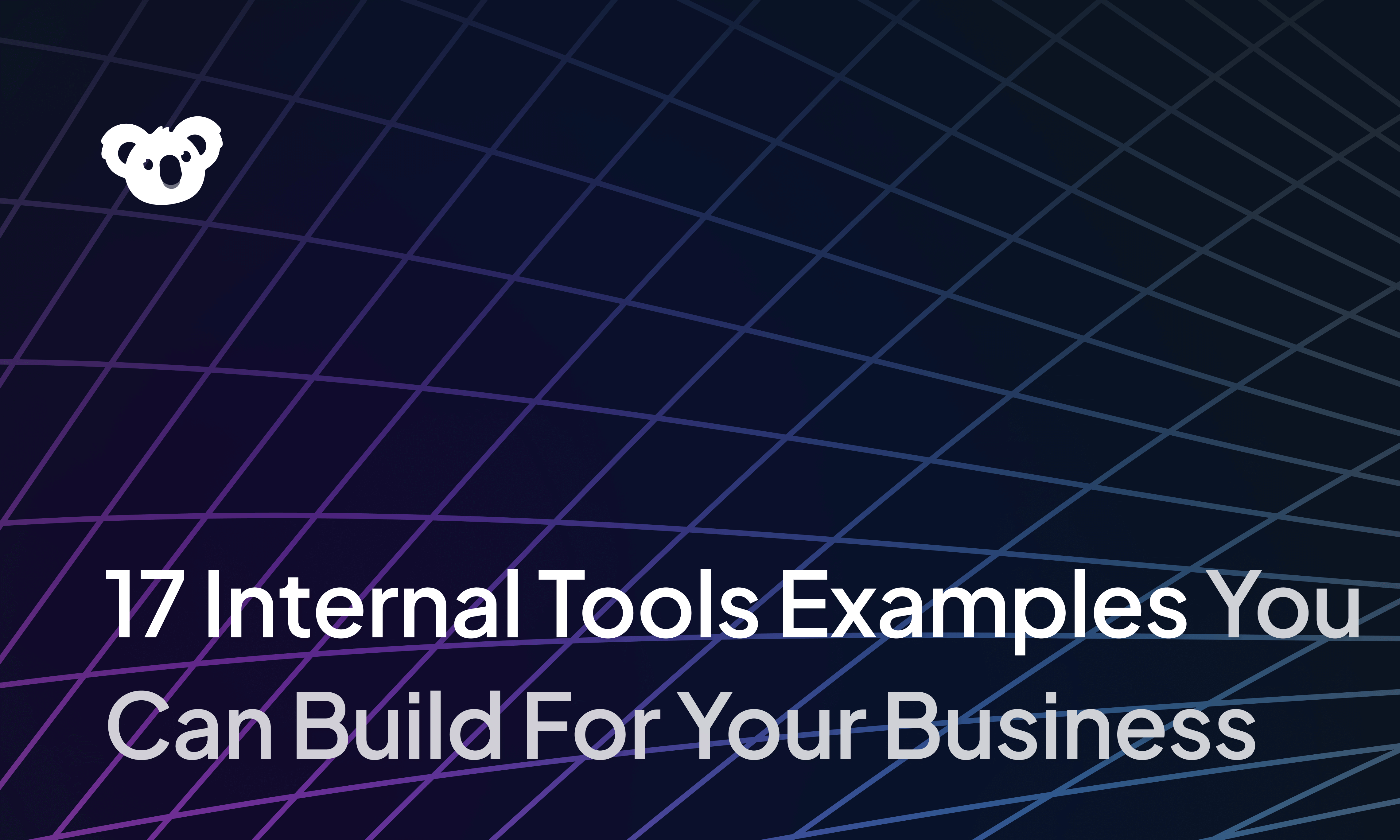


Low-code compliance ensures applications built on rapid development platforms meet security and regulatory requirements. These platforms empower users to build faster, but often bypass IT’s established governance frameworks, creating compliance risks.
When governance controls are missing, a sales manager might spin up an app that stores customer data in an insecure database, or an HR team could launch a workflow that accidentally exposes sensitive employee records.
Organizations need safeguards to prevent these vulnerabilities.
In this article, we’ll cover:
- What low-code compliance is and why it matters
- Common compliance risks and security safeguards that platforms should support
- How to build guardrails and how Superblocks enables governed development
What is low-code compliance?
Low-code compliance is the set of policies and controls that ensure applications built on app builders meet your organization’s security, privacy, and regulatory requirements. In other words, it refers to the guardrails that keep fast business-led development from creating risks like data leaks that can lead to non-compliance.
Compliance becomes especially critical in regulated industries such as:
- Finance: Apps must comply with PCI-DSS, SOC 2, and SOX.
- Healthcare: HIPAA demands encryption, PHI safeguards, and detailed access logging.
- Government: Agencies must follow data residency rules and strict hosting transparency.
Technical leaders must confirm that every app, whether created by IT or business users, follows organizational and regulatory guidelines. In traditional coding, this may be through code reviews, secure coding practices, and CI pipelines.
In low-code, many apps are built by non-developers with little or no security training. IT must embed guardrails into the platform itself. Vendors provide tools like encryption and RBAC, while teams enforce governance through templates, training, and monitoring.
Why compliance matters in low-code development
When users build apps outside the standard IT pipeline, these apps can bypass security reviews, architectural standards, and governance checks.
This creates shadow IT. In a low-code context, it’s especially risky because business users can quickly build dozens of untracked apps that appear across the org.
The apps can collect personal data without encryption or integrate with company systems without an audit trail. Such gaps trigger regulatory fines, expose customer data, and damage brand reputation.
Low-code development must account for these risks from the start. A single violation could halt a project or result in costly rework to retrofit security, which negates the speed gains.
Common compliance risks in low-code platforms
Even with built-in security features, low-code platforms expose organizations to specific compliance challenges.
These risks include:
- Data security gaps: Misconfigured permissions or weak access controls can leave sensitive data exposed.
- Vendor lock-in and opaque hosting: Many low-code platforms are proprietary cloud services and use DSLs (domain-specific languages) that aren’t extensible. You cannot easily export data for audits or migrate away if the platform fails a security requirement.
- Lack of audit trails and monitoring: A platform that can’t produce reliable audit trails leaves teams unable to demonstrate data integrity or prove adherence to regulations.
- Shadow IT apps: When dozens of unvetted apps emerge across departments, each one becomes a potential rogue data processor. This sprawl amplifies compliance risk, since IT cannot secure or govern what it doesn’t know exists.
Core safeguards of low-code security
To address the low-code risks, organizations need baseline security safeguards. Most enterprise-grade platforms already provide them, but teams must configure and enforce them consistently.
The essentials include:
- Authentication and role-based access control (RBAC): Start by integrating enterprise identity systems such as Single Sign-On and MFA. Within apps, use RBAC to define clear roles like “HR Manager” or “Read-Only Viewer” and enforce least-privilege access.
- Encryption at rest and in transit: Any data stored by low-code applications at rest in databases or files should be encrypted using strong algorithms such as AES-256. Likewise, data in transit, such as API calls, integrations, and form submissions, should use HTTPS/TLS and other encryption protocols.
- Secure API connections and integrations: Treat integrations as potential attack surfaces. Use secure keys, never hard-code secrets, and rotate credentials regularly. Restrict tokens to only the data and operations needed. Some platforms now provide pre-built connectors with security controls. IT should approve which ones are allowed.
- Continuous monitoring and audit logging: Enable detailed logs that capture logins, data access, configuration changes, and publishing events. Route these logs to enterprise SIEM tools for anomaly detection and compliance reporting.
How to build the guardrails for low-code governance
As more business users adopt low-code, enterprises need formal guardrails that define who can build, how apps move into production, and what oversight exists along the way
Here’s how enterprise teams are enforcing low-code governance:
- Central IT oversight while enabling business users: IT approves platforms and creates secure dev/test/prod environments so apps don’t pop up in hidden, insecure places.
- Governance committees or centers of excellence: This body defines policies, shares best practices, and approves high-risk apps. Each department doesn’t have to set its own compliance rules.
- Defined development policies and approval workflows: Policies dictate coding standards, data usage (e.g., PII only in encrypted environments), and required security features. Approval workflows then act as checkpoints, ensuring apps meet compliance requirements before release.
- Using version control and audit logs: Version control and detailed logs capture who changed what and when, giving teams a reliable record of each app’s lifecycle. Adding short documentation of an app’s purpose and data flows strengthens accountability and simplifies audits.
Best practices for achieving low-code compliance
In low-code, speed makes it easy to cut corners, so teams need repeatable methods to stay secure as they build.
The following practices help organizations embed compliance into development:
- Map compliance requirements before development starts: Before anyone builds a low-code app, identify the regulatory and security requirements that will apply. This allows you to embed the right features early, such as consent screens, audit logs, or encryption for sensitive fields.
- Standardize templates and reusable components: Provide pre-approved templates, modules, and components that already meet security and regulatory standards. Business users can start from these templates rather than a blank canvas and inherit the compliance measures by default.
- Train business users on compliance basics: Train employees who build apps on data privacy, security practices, and the dos and don’ts of your policy.
- Automate testing, monitoring, and alerts: Use automation to keep pace with rapid delivery. Integrate security tests into pipelines, run vulnerability scans on apps, and use scripts to validate access controls. Feed logs into your SIEM and configure alerts for anomalies, such as unusual data exports or spikes in failed logins.
- Regular audits and vendor reviews: Periodically test whether your apps and platform settings still align with policy. Also, verify that the platform itself maintains certifications and continues to support your compliance needs. These checks will highlight any drift or areas that need stronger controls.
Tools and platforms supporting low-code compliance
Enterprises usually combine built-in platform features with external security layers and governance tools. The mix typically falls into three categories:
1. Built-in compliance features
Most enterprise low-code platforms now include controls designed for regulated use cases. Look for:
- Role-based access controls (RBAC) to define user permissions.
- Encryption at rest and in transit to protect data storage and transfers.
- Audit logs and version control to track who accessed or changed what, and roll back if needed.
- API security and throttling to enforce authentication, IP whitelisting, and request limits.
- Pre-built compliance modules or certifications, such as HIPAA-ready templates, GDPR toolkits, or vendor certifications.
2. External monitoring and security layers
Platform features are a starting point, but organizations often add their own security stack. They use:
- SIEM tools like Splunk, QRadar, or Sentinel monitor activity across apps.
- Vulnerability scanning and pen testing for APIs and integrations.
- Policy enforcement engines that automatically validate app configurations.
- Compliance dashboards that provide a real-time view of risk posture and drift.
3. Governance and lifecycle management tools
There are tools and practices focused on managing the lifecycle of low-code apps and the overall citizen development initiative.
These help maintain order and compliance up to when an app retires:
- Change management workflows that gate deployments through ServiceNow, Jira, or built-in promotion pipelines.
- Integration with Git and project boards to align citizen development with professional dev workflows.
- Documentation and traceability frameworks that record app purpose, data flows, and regulatory requirements in a consistent format.
- Centers of Excellence (CoE) platforms that provide shared dashboards, automated clean-up, onboarding support, and centralized oversight for citizen developers.
Examples of compliance in action
Low-code compliance looks different in each industry, but the methods to stay compliant are usually similar.
Below are a few examples:
- Healthcare: A provider might use low-code to digitize intake forms and lab notifications. IT enforces RBAC, applies encryption, and enables access logs. These steps help keep Protected Health Information (PHI) within HIPAA rules.
- Banking: A bank might build internal risk dashboards and loan workflows on a governed low-code platform. The bank could show traceability during a SOC 2 audit with audit logging and SIEM integration.
- Government agency implementing GDPR-compliant apps: A public agency might deliver permit apps through low-code. Hosting data in EU servers, adding consent notices, and logging user activity demonstrate compliance with GDPR.
What does the future of low-code compliance look like?
Low-code adoption keeps growing, and compliance expectations will grow with it. Looking ahead, several trends stand out:
- Regulators will increase scrutiny: Auditors now expect low-code apps to meet the same standards as traditional software. Teams should assume that GDPR, HIPAA, SOC 2, and other frameworks apply, no matter who builds the app.
- AI assistance introduction: AI-driven development introduces more algorithmic decisions inside apps. This raises compliance questions around fairness, transparency, and explainability, especially when low-code apps use AI to make or influence decisions.
- Hybrid governance will become the norm: Organizations will blend central IT oversight with self-service guardrails. Business users will keep the freedom to build, while automated policies and approval workflows enforce security.
Build secure, governed apps with Superblocks
Superblocks enables responsible democratization of AI app development with a secure, centrally-governed platform. The platform gives engineering and IT the control to enforce compliance while giving business users and developers the freedom to build.
Our extensive set of features enables this balance:
- Flexible development modalities: Teams can use Clark to generate apps from prompts, the WYSIWYG drag-and-drop editor, or code. Changes you make in code and the visual editor stay in sync.
- Context-aware AI app generation: Every app built with Clark abides by organizational standards for data security, permissions, and compliance. This addresses the major LLM risks of ungoverned shadow AI app generation.
- Centrally managed governance layer: It supports granular access controls with RBAC, SSO, and audit logs, all centrally governed from a single pane of glass across all users. It also integrates with secret managers for safe credentials management.
- No vendor lock-in: Export apps as standard React code and host them independently. Full ownership supports compliance reviews and long-term maintainability.
- Hybrid deployment: Deploy the on-premises agent within your VPC to keep data and code execution inside your network to meet residency and sovereignty requirements.
- Monitoring and integrations: Feed logs into SIEM tools to detect anomalies and maintain continuous oversight across all apps.
- SDLC process integration: Manage apps in Git and automate deployments with CI/CD pipelines like GitHub Actions, CircleCI, or Jenkins for controlled, repeatable releases.
If you’d like to see Superblocks in action, book a demo with one of our product experts.
Frequently asked questions
What are the biggest security risks of low-code platforms?
The biggest risk of low-code platforms is loss of visibility and control, which can lead to security misconfigurations and data breaches if apps aren’t properly governed or monitored.
When business users build apps without oversight, IT cannot guarantee security or compliance. Opaque vendor hosting adds another layer of uncertainty if platforms lack clear documentation or compliance certifications.
How does low-code governance differ from IT governance?
Low-code governance focuses on managing non-technical users and the controls on platforms, while IT governance is aimed at professional developers and code review processes.
IT governance enforces policies through reviews, pipelines, and secure coding standards. Low-code governance embeds guardrails in the platform to keep non-developers compliant while they build.
Can low-code platforms meet HIPAA and GDPR requirements?
Yes, low-code platforms can meet HIPAA and GDPR when organizations configure them to enforce the right safeguards, such as RBAC, and audit logs. They can also sign required agreements with vendors (BAA for HIPAA, DPA for GDPR) and ensure data stays in approved regions.
How do enterprises ensure low-code security?
Enterprises ensure low-code security by defining clear controls up front and verifying them continuously. Identity systems handle authentication, the platform enforces permissions, and monitoring tools track usage so IT can spot anomalies before they become breaches.
What role does IT play in low-code governance?
IT oversees low-code governance by approving platforms, setting secure environments and standards, and monitoring app usage to ensure compliance.
Stay tuned for updates
Get the latest Superblocks news and internal tooling market insights.
You've successfully signed up
Request early access
Step 1 of 2
Request early access
Step 2 of 2
You’ve been added to the waitlist!
Book a demo to skip the waitlist
Thank you for your interest!
A member of our team will be in touch soon to schedule a demo.
Table of Contents






